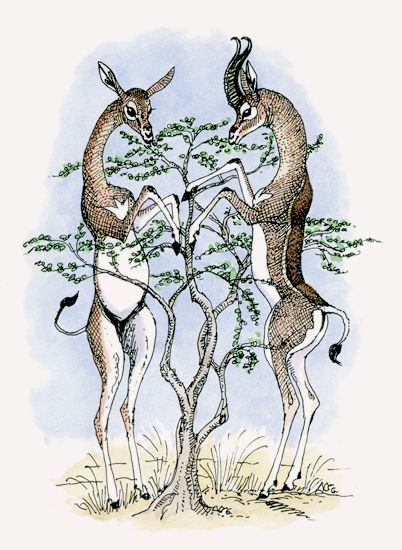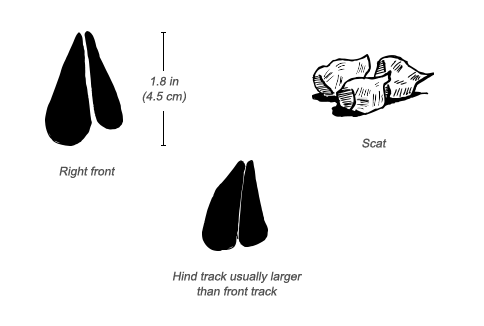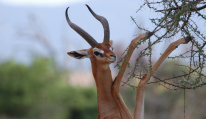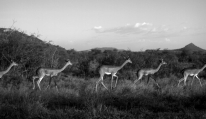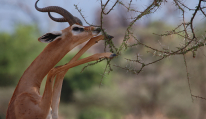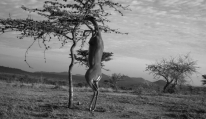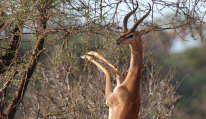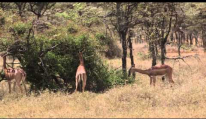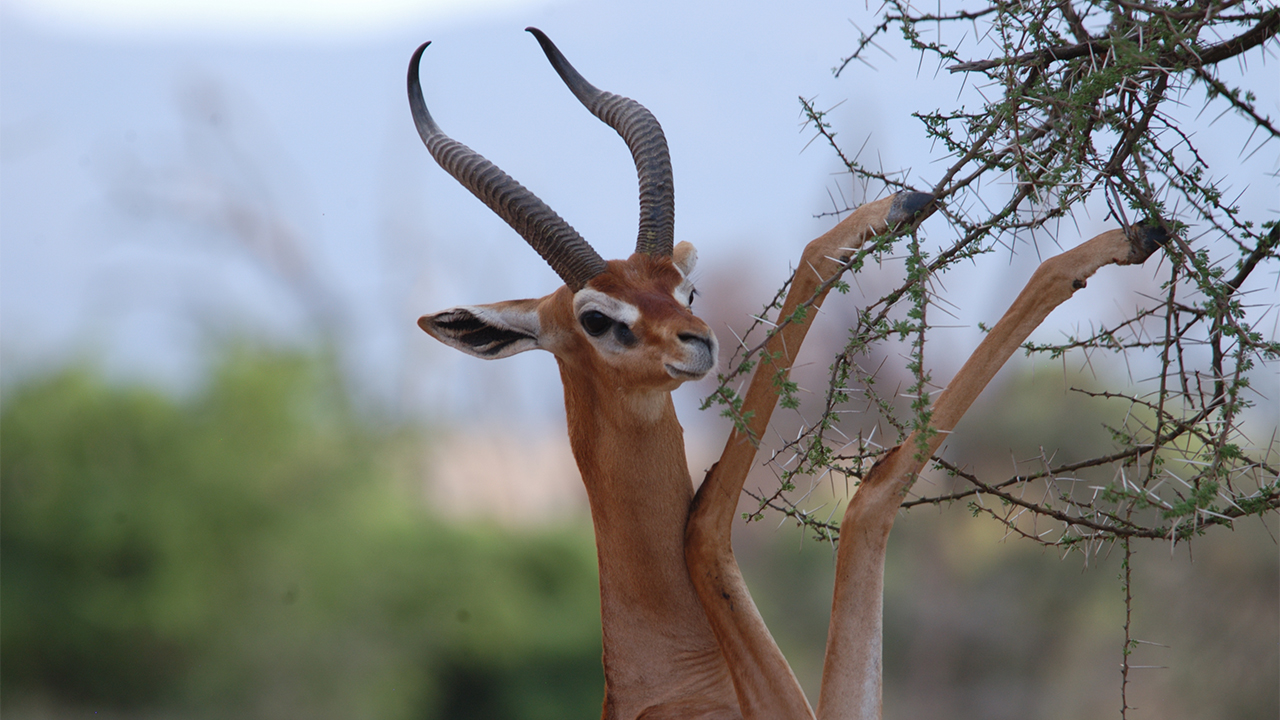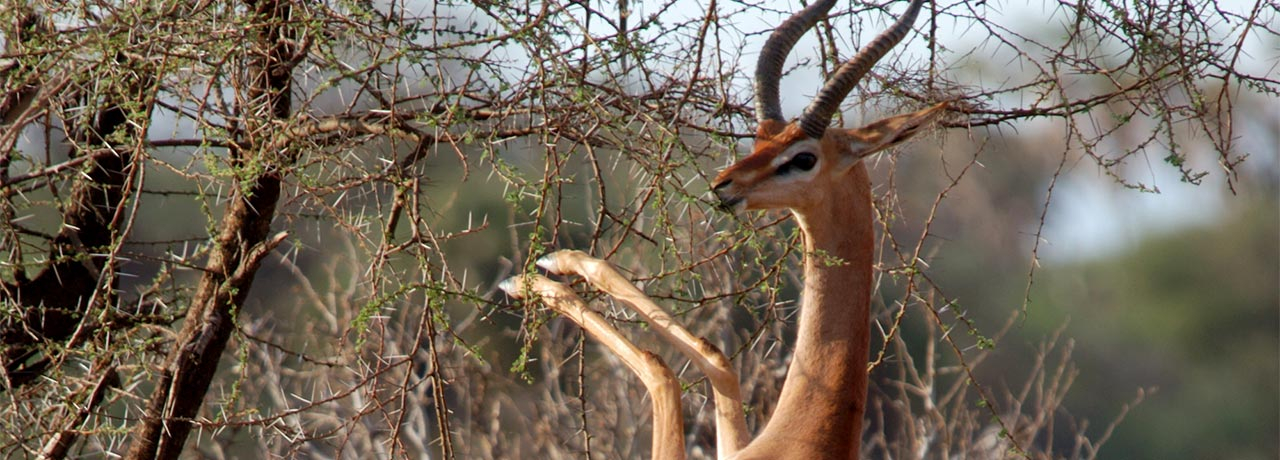Social Structure
Gerenuk social structure is similar to that of other species of antelopes. They live alone or in small herds of about five or six members. Larger groups are usually temporary, forming when good food is particularly abundant. Herds vary in terms of the age and sex of their members. As they grow, young male gerenuks form peer groups for short periods. Females also form small herds, and both female and sub-adult male groups establish their own home ranges, although boundaries overlap. Older males tend to remain solitary and establish very set territories. Mixed groups also occur. Although males within these groups are dominant, they trail the herd instead of leading it and have no say in the group’s movements. Relationships are not long-lasting. Even the bond between mother and calf ends with the birth of the next offspring.
Communication
Gerenuks communicate mainly by head rubbing. Although vocal communication is very rare, these gazelles will emit a short snort when they are in distress, and young gerenuks bleat for their mothers.
Behavior
Gerenuks alternate between eating and moving, though how much time they spend doing each activity varies daily and by season. On hot days, gerenuks spend less time moving and foraging, preferring to rest in shady areas. What they do at night depends on how much light the moon and stars provide; they are much less active on darker nights when they are more vulnerable to predators. Although male gerenuks have horns, they rarely use them for fighting. Instead, they use their horns for “shrub horning”—assaulting trees or bushes in a type of combat display. Younger males also use their horns to play fight with one another.
Conservation
Gerenuks are particularly susceptible to habitat destruction by humans and elephants that reduces the bushy layer of vegetation these gazelles rely upon. However, because gerenuks thrive on overgrazed areas and don’t live in agricultural regions, they have evaded some of the more common perils that face other species. Large sections of their range are within protected areas, such as Kenya’s Tsavo East, Meru, and Amboseli national parks, as well as other game reserves. Still, illegal hunting, firewood collection, and farming activities continue to reduce their numbers, and wars and politicial unrest not only put populations at risk but also make gathering data on the gerenuk’s status very difficult.

